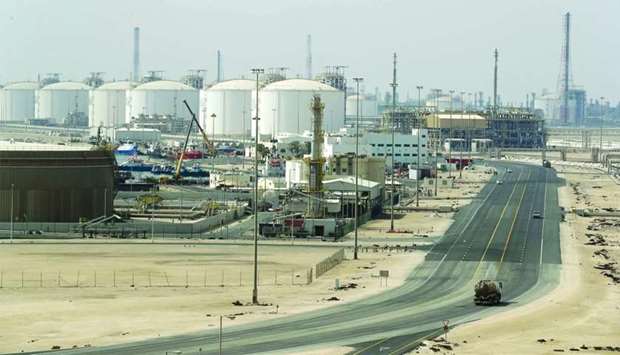Global LNG leader Qatar is “well positioned” in the industry given its “low production costs and its widely perceived competence and reliability” as a supplier, researcher Dun & Bradstreet has said in a country report.
Despite expectations of prolonged pressure on global energy demand and a sharp decline in LNG spot prices (in January-June these fell below $2 per Million British Thermal Units – mmBtu- in most markets), Qatar Petroleum (QP) remains on course to implement the 64% LNG output boost from the North Field Expansion (NFE) project, Dun & Bradstreet noted.
Launched in September 2018 and known as North Field East (NFE), the project calls for the further upstream development of the supergiant gas field to feed four new 7.8mn tonne/year liquefaction trains at Ras Laffan, a north-eastern port, raising QP's liquefied natural gas (LNG) production capacity by 43%, to 110mn tonnes per year (mtpy) by 2024.
Subsequently, Qatar topped up its expansion plan for its vast liquefied natural gas production facilities after drilling and appraisal work at its gas fields and now targets production of 126mn tonnes per year by 2027.
Recently, QP awarded Air Products and Chemicals, a US company to supply the gas-liquefaction technology for the first phase of the NFE.
Export data show that Qatar’s LNG export volumes increased in the first half of the year (H1 2020) by 40mn tonnes y-o-y, the report said.
“The marginal increase will not offset the revenue weakness that has resulted from the slump in demand, but it demonstrates Qatar’s willingness and ability to withstand lower prices to protect its market share.
“In recent years, Qatar’s primacy as the world’s largest exporter of LNG has been challenged by the likes of Australia and the US. However, to curtail production to support natural gas prices, QP is leveraging its key competitive advantage of having the lowest production costs of major exporters as well as sizeable reserves compared to present production levels,” Dun & Bradstreet said.
However, it noted “The key long-term challenge facing Qatar’s natural gas industry is the global shift from long-term contracts to the spot market, which accounted for 34% of the total volume traded in 2019. In Qatar’s key Asian and European markets, large customers, such as India, have demonstrated a preference for the flexibility of short-term contracts based on spot prices.”
On the country’s business environment outlook Dun & Bradstreet said, “Commercial risks are generally considered to be low. Qatar ranks at 29th in the latest Global Competitiveness Report.”
Qatar, it said, has “largely overcome” the economic impact of the blockade (by a quartet of Arab nations) and found new trade routes and sources of financing, which will limit risks. “Covid-19 crisis created a wide range of challenges to the trade and commercial environment globally, but Qatar is better placed than most countries to ride out the pandemic,” Dun & Bradstreet noted.


